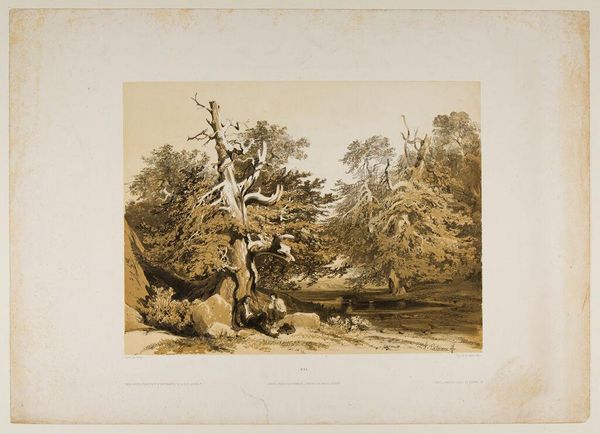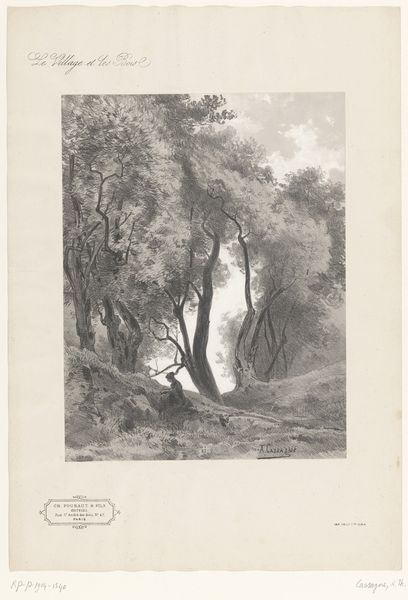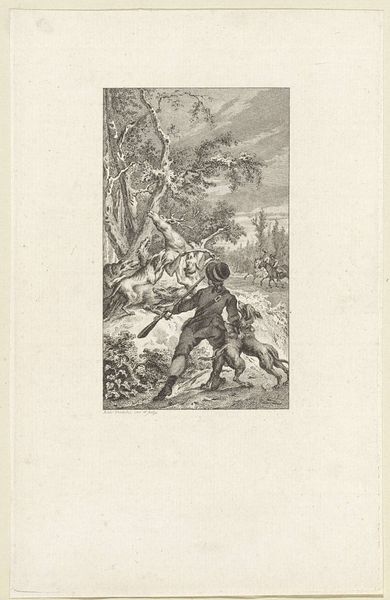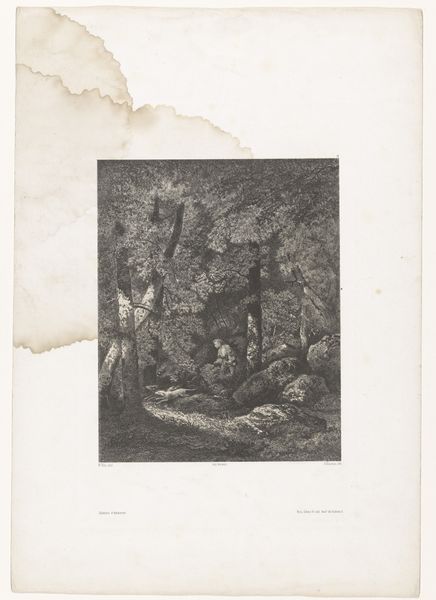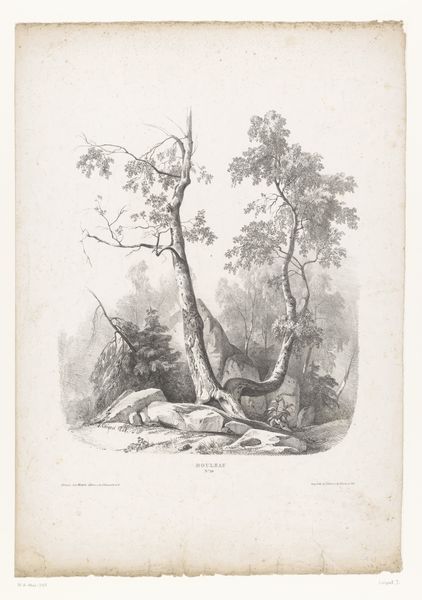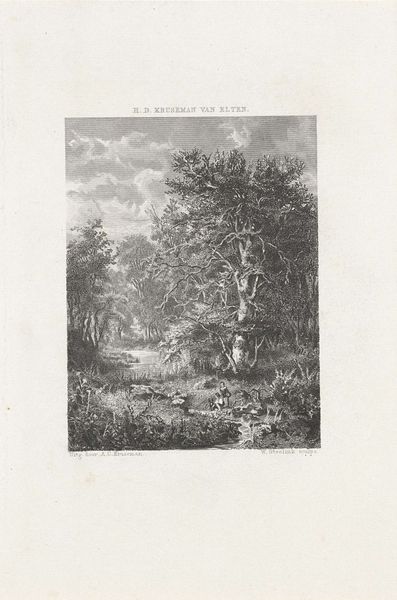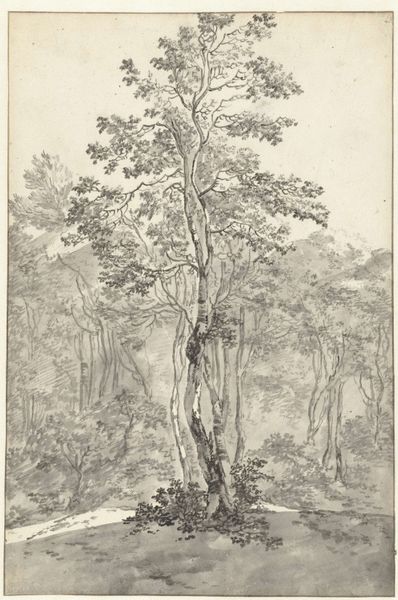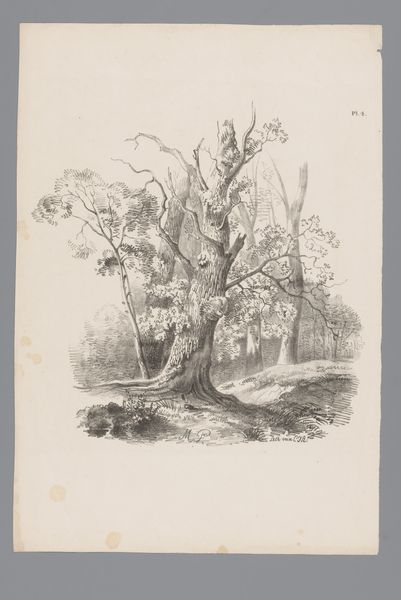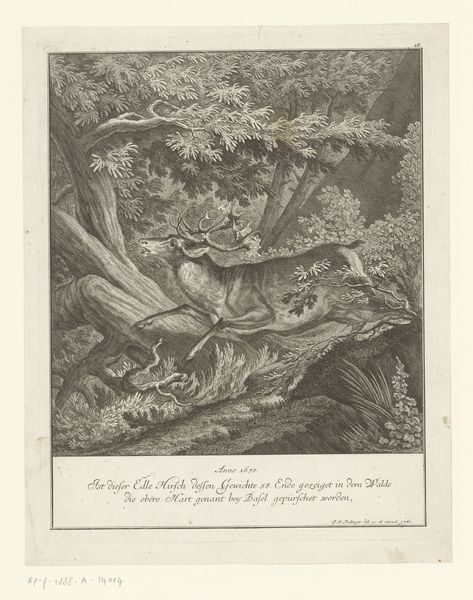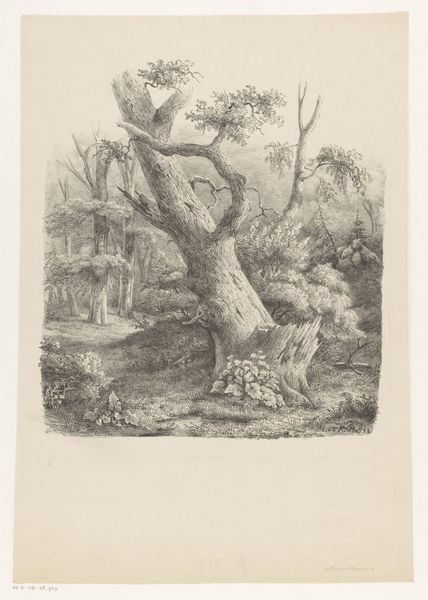
drawing, pencil
#
drawing
#
landscape
#
forest
#
romanticism
#
pencil
Dimensions: height 226 mm, width 170 mm
Copyright: Rijks Museum: Open Domain
Editor: Here we have Pierre Louis Dubourcq's "Boslandschap," created between 1830 and 1858 using pencil as the primary medium. The scene is wonderfully intricate. What really stands out to me is the tactile quality of the foliage. What’s your take on this drawing? Curator: This drawing exemplifies the artist's engagement with materials available at the time, focusing on the immediacy of pencil drawing. Look closely at how the pencil strokes themselves build up the image, suggesting not only form but also the density of the undergrowth and the very texture of the tree bark. It prompts the question: what social factors would influence Dubourcq to choose readily available pencil and paper for his landscapes, when oil paints might have implied a higher status for his work? Editor: So, it’s almost like the drawing's humbleness is a statement itself? Does that challenge traditional notions of what's considered "high art"? Curator: Precisely. The choice of pencil, traditionally a preparatory tool, and the depiction of an unmonumental, unpopulated forest space pushes against the grand historical narratives often associated with painting. Think about who had access to these kinds of materials. It invites a discourse about class, access, and artistic labor. Also, note the detailed rendering. Consider it a type of "landscape reportage." What sort of social context might generate an artistic sensibility so committed to details of this landscape's material features? Editor: That makes me see it differently. I was initially drawn to the picturesque scene, but considering the materials elevates it. Curator: Indeed. This lens allows us to re-evaluate so many artistic choices and perhaps appreciate how even the "simplest" sketch participates in a complex network of production and meaning. Editor: I see now how a materialist approach makes the everyday aspects of art become the focal point for unlocking meaning. Curator: Exactly, by thinking of "Boslandschap" as an index of 19th-century material culture, rather than just an image, we discover unexpected artistic richness.
Comments
No comments
Be the first to comment and join the conversation on the ultimate creative platform.

